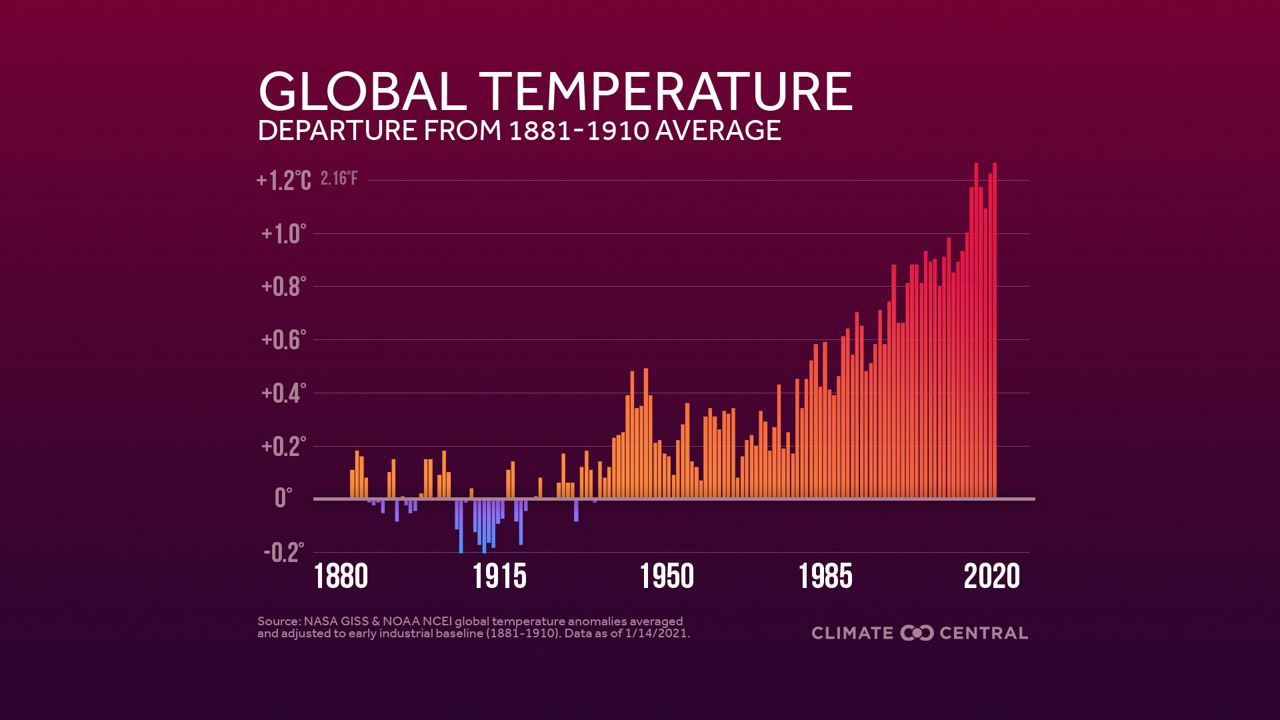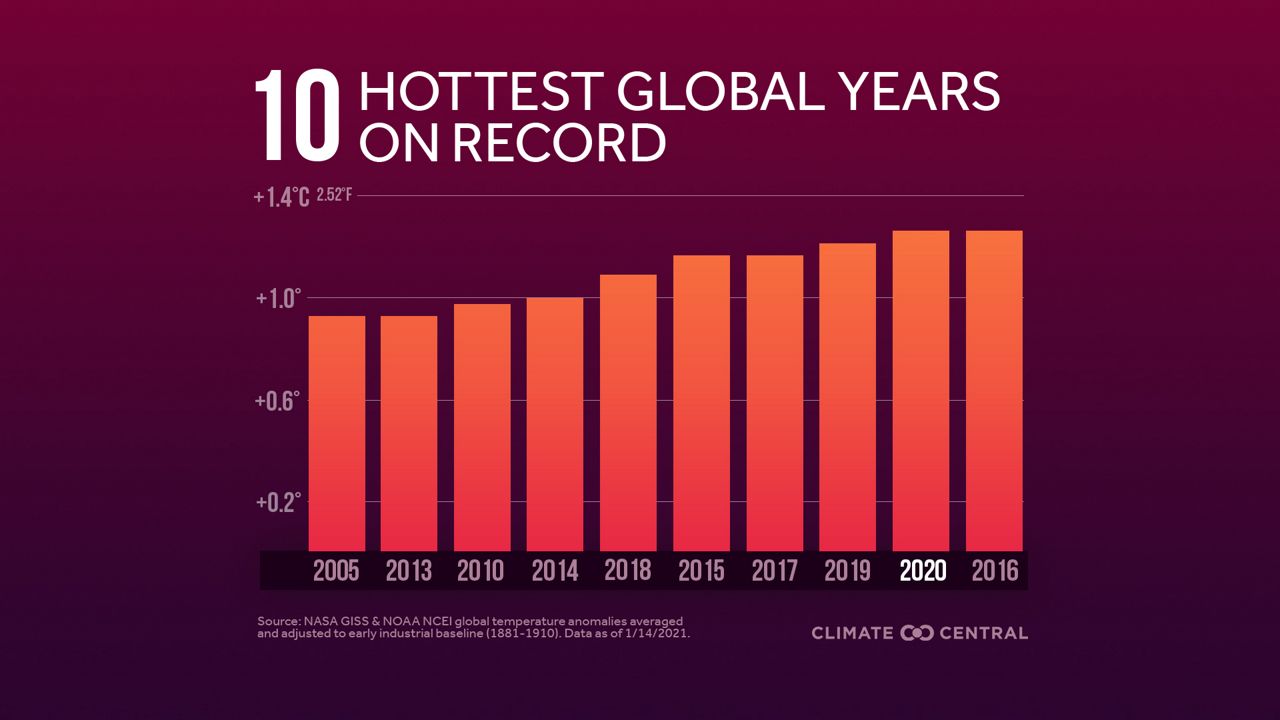NASA announced that 2020 was the second-hottest year on year globally despite the cooling influence of La Niña and the worldwide shift in daily life due to COVID-19.
Elizabeth Hoy, a senior scientist with NASA, explained what these global temperature trends tell us about our changing climate.
"2020 was a really warm year. It just about tied 2016 as the warmest year on record," said Hoy. Records of this data go back to 1880.

The last seven years have been the seven warmest years in that entire record.

NOAA released a similar 2020 dataset, in which Hoy explained the difference.
"NASA and NOAA basically use the same input data, and it is from weather stations, trackers on ships, weather buoys out in the ocean." Hoy said. "However, they run some slightly different calculations to come up with their overall global temperature averages for the year."
"It's nice to have two different agencies both looking at the same thing," and, according to Hoy, they came up with "almost the same exact result."
The annually-compiled data helps us understand long term trends.
Hoy noted, "we can expect to see a similar trend into the future."
That is, unless we can cut down on the amounts of carbon dioxide released into the atmosphere.
"Over the last 100 years, we have raised our global temperature two degrees Farenheit," and we could continue along that trend, Hoy said, "unless we think about what our greenhouse gas emisions will look like going into the future."
With less people commuting and less cars on the road in 2020 due to the pandemic, there were some noted changes at the height of the pandemic.
"Some gases changed a little and had a slightly cooling effect," Hoy said. "But at the same time, we had less particulate matter in the air, the sky might have been a little clearer where you are, and that actually can lead to a slight warming effect, believe it or not. Because more of the sun's rays are making it to the earth and warming it up."
Hoy recognized that COVID-19 habits are shifting again, saying "now that we are on the road to recovery here, we're actually seeing that our normal trends are coming back into place."
The global data also reveals information about the record-setting 2020 Atlantic hurricane season which featured 30 named storms.
"As you get these warmer global temperatures, you're warming up over the ocean as well, and you're creating more heat and more energy out there."
Patterns like El Niño and La Niña can have an impact these temperature measures. Last year's hurricane season coincided with a return of La Niña, which tends to have a cooling effect.
"2016 had a stronger influence due to El Niño than 2020 did. So, 2020 really didn't get that impact as much from El Niño and it was still basically tied with 2016."
Warmer temperatures were also observed in usually colder spots like Siberia, where a record-setting 100-degree temperature occured there during 2020.
"That region is heating up two to three times faster than the rest of the world," which can have an influence elsewhere. Hoy remarked: "What happens up there doesn't stay up there."
Thawing permafrost and increased wildfires can translate to warmer global temperatures througout the rest of the world.
While there is much to unpack with the 2020 temperature data, there is much to look forward to in 2021. Hoy was encouraged by the eventual return in-person field data collection, which will add value to the data that helps explain these worldwide trends.



